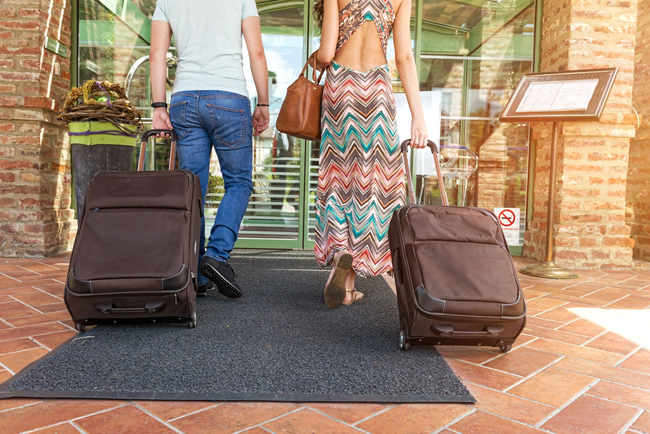
Even grand can be bland for today’s experience-driven hotel guests, who prefer unique amenities and good connectivity over sheer aesthetics.
Amid fierce competition from alternative accommodation providers like Airbnb, the industry is getting the message. To address the competitive threat, hotel owners and brands continue to look for innovative ways to differentiate their hotel with technology, unique design and creative operating solutions—with the ultimate goal of increased revenue, great guest experience and loyalty. Global hotel groups are responding by creating a flurry of new sub-brands as well as re-evaluating existing brands to create more differentiation and reach more business and leisure travelers.
“We’re seeing a lot of interest in experiential design from soft brands, full service and even select service brands,” says David Black, Managing Director, Hotel Project and Development Services, JLL. “They’re discovering that hotel guests aren’t just interested in basics like cost and convenience—travelers today are looking for more, such as interesting building amenities and unique experiences.”
Six design elements that supercharge guest experience
Winning features, says Black, go well beyond the basics, like a positive check-in experience and fast wifi.
“Some things are simply non-negotiable in today’s hotel design,” he says. “But forward-looking hotels are bringing that ‘extra’ element that guests are seeking, from the lobby to the guestroom—and all the connected spaces in between.”
Here are six key focus areas to create that winning experience:
- Deliver a distinctive guestroom.
Size isn’t everything in today’s guest rooms—in fact, many of the new brands are creating smaller rooms with a comfortable bed, great shower and lots of technology to appeal to a new kind of traveler. Brands are also getting more creative with guest bathrooms, from a focus on innovations in the shower including see-through, “exhibitionist” showers, to unique finishes, to a great vanity experience that gives guests a special space to get ready for an evening out. Bathrooms from AccorHotels, which owns the Fairmont, Raffles and Novetel brands among others, feature rain showers, soft lighting and music.
- Rethink the hotel lobby.
Many hotel lobbies were once merely an attractive, even grandiose, place to sign in, and then leave as quickly as possible. Today, however, owners and brands are finding value in focusing on the entire lobby experience, which is designed to improve guest experience, drive greater food and beverage revenue, and provide a fun and interesting co-working environment—even at expense of the guest room square footage.
“The lobby is becoming a vibrant communal gathering area, where people can work, dine, eat and socialize,” says Black. “Some hotels are also using lobby design to create a gateway to the local community, carving out space for local art exhibits, performances and social gatherings that enable guests to easily connect with the neighborhood.”
- Feed their appetite—and their palate.
Great food is increasingly on the menu at hotels for good reason. It’s become easier for even the busiest travelers to check their smartphone for the closest restaurant and go elsewhere. So, to keep those dollars in the hotel—while providing another experience that keeps guests coming back—hotels are offering on-site cafes featuring local cuisine from outsourced restaurant groups, as well as convenient and freshly made grab-and-go options which offer a great alternative to room service. Gourmet menus are no longer the domain of five-star hotels either, with mid-market hotels upping their game for both food and service.
- Appeal to the modern worker.
Today’s mobile and collaborative business travelers are turning their backs on cold, sterile business centers or the prospect of working alone in their rooms in favor of areas where they can easily connect with other guests or colleagues. In response, hotels are designing communal spaces as multi-functional areas that can support lounging, networking or headphones-on work. Others are going even further, offering modern, highly connected co-working areas.
- Invest in technology—and be ready for change.
The right technology is a must for all modern hotels. Mobile apps, for example, can help streamline check-in as well as improve insights into guest satisfaction and preferences. And smart tech such as tablet-controlled lighting systems, and motion sensors that control heating levels merge function and style while adding to guest comfort.
Hilton just unveiled its plans for their new Smart Room rollout for 2018. Their app allows a guest to control their room’s thermostat, television and other amenities via their mobile phones while also capturing guest preferences.
Marriott, meanwhile has created a smart guestroom lab to test technology that would let guests control everything from the shower temperature to the color of the light with the sound of their voice. The smart hotel rooms include devices and amenities that respond to individual guests and are customizable based on their preferences.
But technology changes fast. “What’s hot today may be stale tomorrow. Owners and brands that want to stay ahead must build flexibility and bandwidth into renovation and development plans from the earliest stages,” says Black.
- Make fitness amenities easy and inviting.
Exercise is part of many people’s daily routine even when they’re on the road – and dingy basement gyms with outdated equipment just won’t meet their needs. A modern fitness center with equipment that’s found in health clubs makes a difference, as does natural light and thoughtfully planned space for other activities, such as yoga or Pilates. Some hotels are going further with rooftop yoga classes, running sessions and even in-room fitness equipment from the likes of Intercontinental Hotels EVEN brand.
While there are endless ways for hotels to stand out from the crowd, the key is to meet guests’ needs through positive experiences rather than gimmicks. “The simpler and more connected you can make their experience, the higher chance of winning back future visits,” concludes Black.


